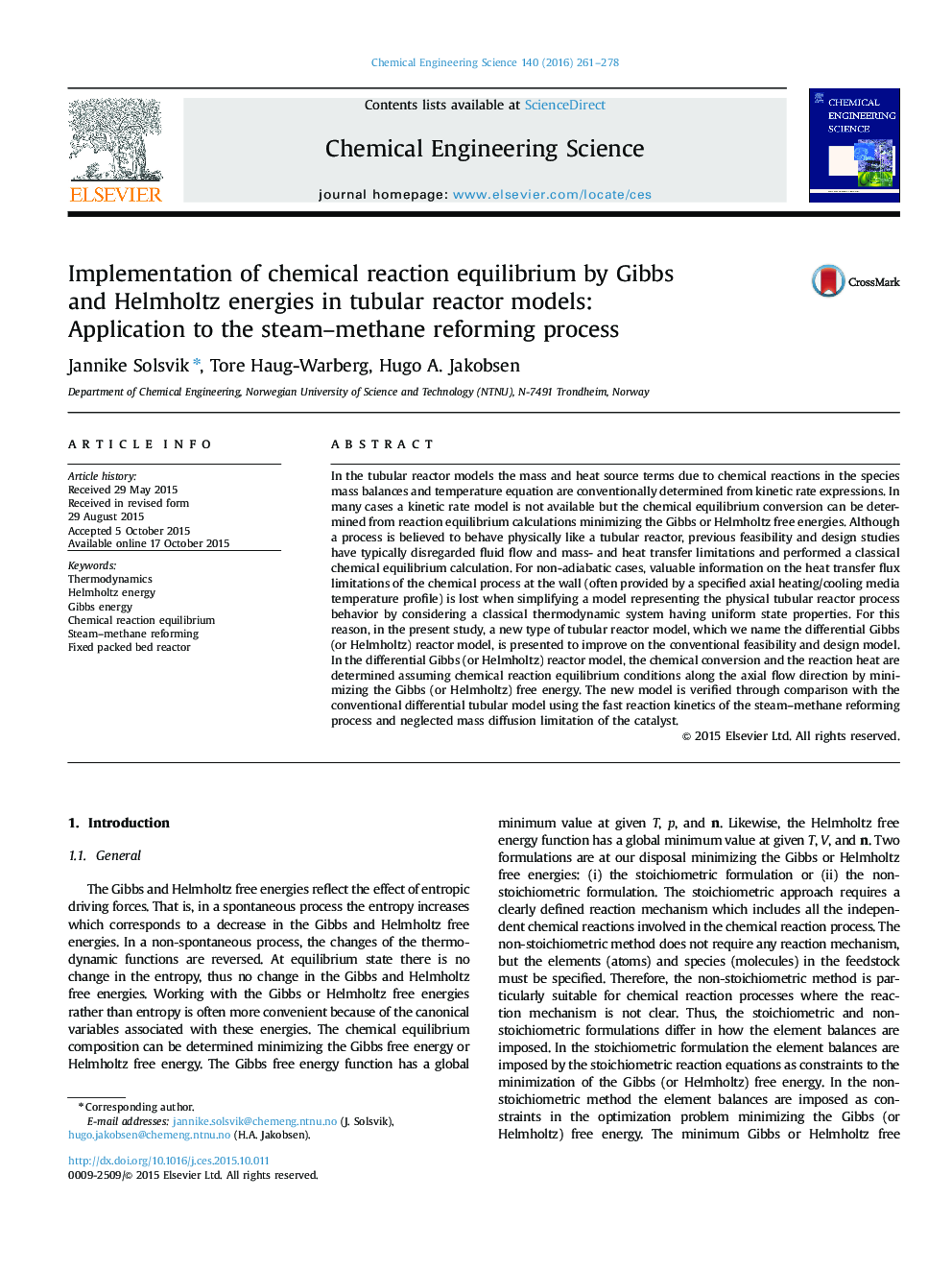| Article ID | Journal | Published Year | Pages | File Type |
|---|---|---|---|---|
| 154548 | Chemical Engineering Science | 2016 | 18 Pages |
In the tubular reactor models the mass and heat source terms due to chemical reactions in the species mass balances and temperature equation are conventionally determined from kinetic rate expressions. In many cases a kinetic rate model is not available but the chemical equilibrium conversion can be determined from reaction equilibrium calculations minimizing the Gibbs or Helmholtz free energies. Although a process is believed to behave physically like a tubular reactor, previous feasibility and design studies have typically disregarded fluid flow and mass- and heat transfer limitations and performed a classical chemical equilibrium calculation. For non-adiabatic cases, valuable information on the heat transfer flux limitations of the chemical process at the wall (often provided by a specified axial heating/cooling media temperature profile) is lost when simplifying a model representing the physical tubular reactor process behavior by considering a classical thermodynamic system having uniform state properties. For this reason, in the present study, a new type of tubular reactor model, which we name the differential Gibbs (or Helmholtz) reactor model, is presented to improve on the conventional feasibility and design model. In the differential Gibbs (or Helmholtz) reactor model, the chemical conversion and the reaction heat are determined assuming chemical reaction equilibrium conditions along the axial flow direction by minimizing the Gibbs (or Helmholtz) free energy. The new model is verified through comparison with the conventional differential tubular model using the fast reaction kinetics of the steam–methane reforming process and neglected mass diffusion limitation of the catalyst.
